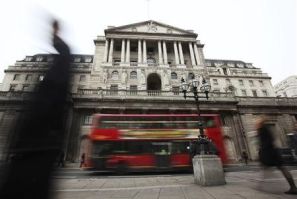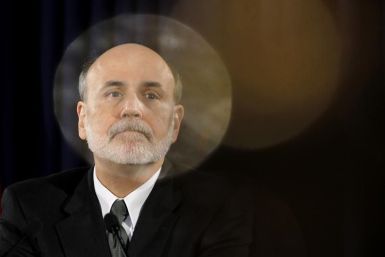Gold inched higher on Thursday after falling to a near three-month low the previous day as weaker prices tempted some buyers, but gains were capped by a stronger dollar and fading hopes for a fresh round of monetary stimulus in the United States.
Gold prices hit their lowest since early January on Wednesday as comments from the European Central Bank lifted the dollar to three-week highs against the euro, accelerating a fall sparked by declining expectations of more U.S. monetary easing.
UK economy seems to be on the track to buck the trend in many other European countries where economic recovery continues to struggle.
Crude oil prices declined in Asian trade Wednesday as the Federal Reserve released minutes from a recent meeting dashed hopes for a fresh dose of quantitative easing (QE3) in the near future.
She didn't mention the U.S. central bank's two previous rounds of bond-buying known as quantitative easing, but Lagarde stressed that past action by the Fed and European regulators helped keep growth strong and steady.
Investors re-adjusted their value calculations for risky assets on Tuesday, selling off stocks, bonds and all manner of commodity futures after the Federal Reserve released minutes from the most recent meeting of its rate-setting committee. The minutes strongly suggested that the U.S. central bank was backing away from the possibility of further monetary easing in the short-run, including any kind of quantitative easing.
Federal Reserve policymakers appear less keen to launch a fresh round of monetary stimulus as the U.S. economy improves, according to minutes for the central bank's March meeting.
Gold held near $1,675 an ounce on Tuesday as investors took to the sidelines ahead of the release of minutes from the Federal Reserve's latest policy meeting, which will be closely watched for clues on the direction of monetary policy.
Gold prices rose above $1,680 an ounce on Monday as the dollar steadied off earlier one-month highs against the euro, with the U.S. unit further paring gains after U.S. construction spending and manufacturing data.
Two days of talks among the leaders of Brazil, Russia, India, China and South Africa wrapped up Friday with little to show other than a currency exchange and a lot of hopeful talk.
The heads of Brazil, Russia, India, China and South Africa, meeting in New Delhi on Thursday, drafted a joint statement attacking American and European aggressive policy actions and dominance of global institutions.
Window dressing, the practice of stock fund managers buying up top performers as the quarter ends to boost the appearance of success, failed Tuesday to lift the major indexes into positive territory.
The Fed chairman said U.S. job market conditions remain weak despite three months of strong hiring and that the improved employment data seem to be out of sync with the overall pace of economic growth.
Gold hit its lowest level since mid-January on Thursday, influenced by dollar strength, with the market having unwound all of the premium built up on expectations for further U.S. quantitative easing.
Gold traded broadly steady on Wednesday, as a boost from a modestly stronger euro against the dollar partly offset slow consumer demand and an erosion in holdings of the metal in exchange-traded products.
Spike in public borrowing will test Chancellor's resolve as he prepares make-or-break budget statement
The latest liquidity operations by European Central Bank (ECB) appear to have averted, at least for the time being, a threatening catastrophe in the euro-zone banking sector. But it would be wrong to think that they have solved the region’s deeper fiscal and economic problems, or secured the future of the single currency itself according to Capital Economics.
The fall in gold prices has prompted one or more central banks to buy as much as four tonnes of bullion in recent weeks, according to an industry source and a Financial Times report on Friday.
The head of the Federal Reserve's New York branch said the U.S. economy isn't in the clear yet, but recent data have been a bit more upbeat, giving investors renewed hope of a fresh round of quantitative easing.
You can't blame investors for feeling a bit squeamish regarding deploying new money in the U.S. stock market these days, despite the Dow Jones Industrial Average's (DJIA) recent rise to 13,000. Where's the Dow headed in the next three months?
Gold rose Thursday, reversing a three-day plunge that left prices beneath their critical 200-day moving average.
Gold fell to its lowest since mid-January on Wednesday after a modest upgrade of the U.S. Federal Reserve's economic outlook added zip to the dollar and gave investors an excuse to lighten holdings of bullion.









































